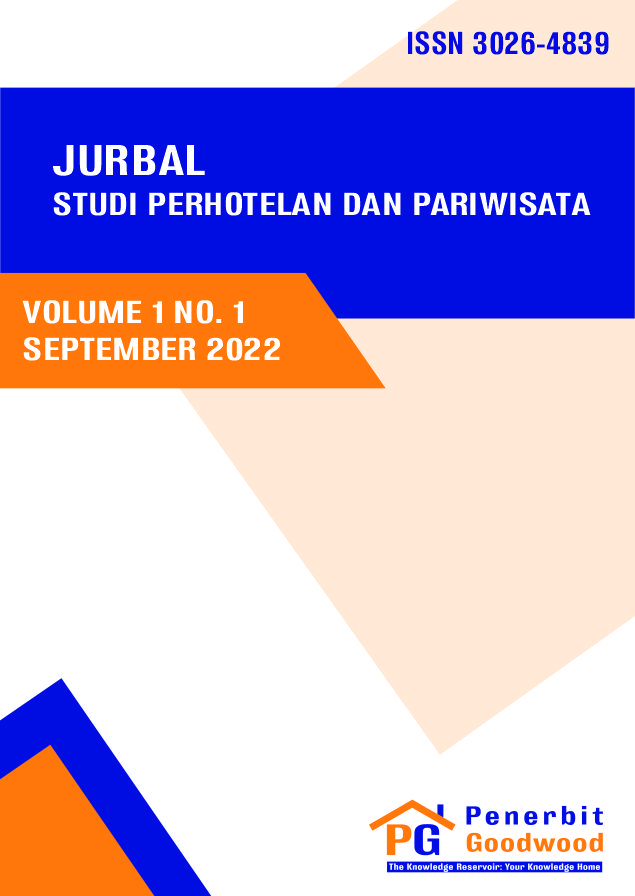Inventory of Potential Attraction of Sungai Langka & Wiyono Village as Cocoa Tourism Village Program at Pesawaran Regency
Abstract:
Purpose: This article aims to to determine the potential and perceptions of villagers towards tourism objects as the result for become Cocoa Village at Pesawaran Regency.
Method: This research descriptive qualitative with data collection techniques by distributing questionnaires, interviews, and observations at the locus area.
To see the public's perception of the tourism aspect in Sungai Langka Village and Wiyono Village, this study used the IPA (Importance Performance Analysis) technique.
Results: The results show that the Sungai Langka & Wiyono Village has a complete tourism object like natural tourism attraction, cultural tourism attraction and artificial tourism attraction. There are adequate primary and secondary facilities, as well as accessibility to the object. Local people perceptions of the attractiveness of tourist objects in Sungai Langka & Wiyono are very good in terms of natural scenery, cultural wealth, artificial tourism potentials, and accessibility.
Limitation: This research was only conducted at used only revolves around the building and construction that in 2018 until 2020, firms from the subsector should be registered on the Indonesia Stock Exchange
Contributions: This exploration has contributed to the enrichment of aspects of the management accounting literature, especially in construction and building sub-sector companies.
Downloads
Agustina, A., & Muliadiasa, I. K. (2023). Dampak Pariwisata terhadap Kualitas Air Danau Beratan Berdasarkan Parameter BOD dan COD. Jurnal Studi Perhotelan dan Pariwisata, 1(1), 21-30.
Asker, S., Boronyak, L., Carrard, N., & Paddon, M. (2010). Effective community based tourism: A best practice manual.
Budiasa, I. W., & Ambarawati, I. (2014). Community based agro-tourism as an innovative integrated farming system development model towards sustainable agriculture and tourism in Bali. Journal of the International Society for Southeast Asian Agricultural Sciences, 20(1), 29-40.
Cooper, C., Fletcher, J., Gilbert, D., Wanhill, S., & Shepherd, R. (1998). Tourism: Principles and Practices.(2ndedn). New York.
Ginting, L. N., Lubis, W., & Intan, D. R. (2020). Karakteristik Petani dan Kontribusi Konsep Agrowisata terhadap Pendapatan Petani Jeruk di Kabupaten Karo. Jurnal Agribisnis dan Agrowisata (Journal of Agribusiness and Agritourism), 9(3).
Goeldner, C. R., & Ritchie, J. (2012). Tourism: principles, practices, philosophies: John Wiley & Son (New Jersey).
Hastjarjo, K. (2023). Model Pemasaran Strategik Perhotelan: Sebuah Makalah Konseptual. Jurnal Studi Perhotelan dan Pariwisata, 1(1), 11-20.
Leiper, N. (1990). Tourist attraction systems. Annals of tourism research, 17(3), 367-384.
Lohmann, G., & Panosso Netto, A. (2017). Tourism Theory: Concepts, Models and Systems: CAB International.
Maiden, J. A. (2008). Participation in sustainable t ourism development: Stakeholders & partnership working: Cardiff University (United Kingdom).
Riyadi, B., Yuliari, G., & Perdana, P. (2023). Travel Bubble and Virtual Tourism Strategies to Increase Tourist Visits. Journal of Sustainable Tourism and Entrepreneurship, 3(2), 115-126.
Wall, G., & Mathieson, A. (2006). Tourism: change, impacts, and opportunities: Pearson Education.
- Agustina, A., & Muliadiasa, I. K. (2023). Dampak Pariwisata terhadap Kualitas Air Danau Beratan Berdasarkan Parameter BOD dan COD. Jurnal Studi Perhotelan dan Pariwisata, 1(1), 21-30.
- Asker, S., Boronyak, L., Carrard, N., & Paddon, M. (2010). Effective community based tourism: A best practice manual.
- Budiasa, I. W., & Ambarawati, I. (2014). Community based agro-tourism as an innovative integrated farming system development model towards sustainable agriculture and tourism in Bali. Journal of the International Society for Southeast Asian Agricultural Sciences, 20(1), 29-40.
- Cooper, C., Fletcher, J., Gilbert, D., Wanhill, S., & Shepherd, R. (1998). Tourism: Principles and Practices.(2ndedn). New York.
- Ginting, L. N., Lubis, W., & Intan, D. R. (2020). Karakteristik Petani dan Kontribusi Konsep Agrowisata terhadap Pendapatan Petani Jeruk di Kabupaten Karo. Jurnal Agribisnis dan Agrowisata (Journal of Agribusiness and Agritourism), 9(3).
- Goeldner, C. R., & Ritchie, J. (2012). Tourism: principles, practices, philosophies: John Wiley & Son (New Jersey).
- Hastjarjo, K. (2023). Model Pemasaran Strategik Perhotelan: Sebuah Makalah Konseptual. Jurnal Studi Perhotelan dan Pariwisata, 1(1), 11-20.
- Leiper, N. (1990). Tourist attraction systems. Annals of tourism research, 17(3), 367-384.
- Lohmann, G., & Panosso Netto, A. (2017). Tourism Theory: Concepts, Models and Systems: CAB International.
- Maiden, J. A. (2008). Participation in sustainable t ourism development: Stakeholders & partnership working: Cardiff University (United Kingdom).
- Riyadi, B., Yuliari, G., & Perdana, P. (2023). Travel Bubble and Virtual Tourism Strategies to Increase Tourist Visits. Journal of Sustainable Tourism and Entrepreneurship, 3(2), 115-126.
- Wall, G., & Mathieson, A. (2006). Tourism: change, impacts, and opportunities: Pearson Education.

